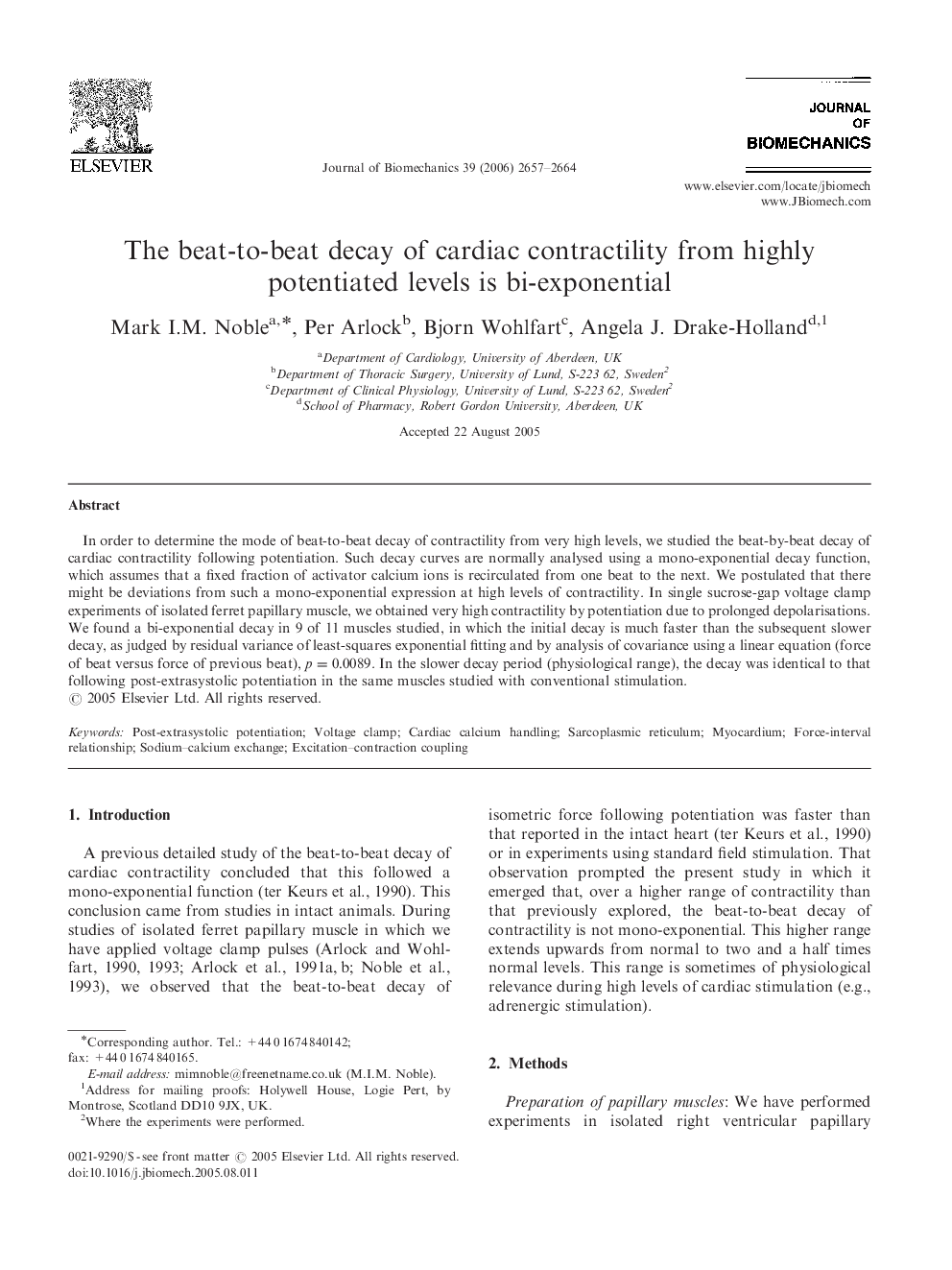| Article ID | Journal | Published Year | Pages | File Type |
|---|---|---|---|---|
| 874693 | Journal of Biomechanics | 2006 | 8 Pages |
Abstract
In order to determine the mode of beat-to-beat decay of contractility from very high levels, we studied the beat-by-beat decay of cardiac contractility following potentiation. Such decay curves are normally analysed using a mono-exponential decay function, which assumes that a fixed fraction of activator calcium ions is recirculated from one beat to the next. We postulated that there might be deviations from such a mono-exponential expression at high levels of contractility. In single sucrose-gap voltage clamp experiments of isolated ferret papillary muscle, we obtained very high contractility by potentiation due to prolonged depolarisations. We found a bi-exponential decay in 9 of 11 muscles studied, in which the initial decay is much faster than the subsequent slower decay, as judged by residual variance of least-squares exponential fitting and by analysis of covariance using a linear equation (force of beat versus force of previous beat), p=0.0089. In the slower decay period (physiological range), the decay was identical to that following post-extrasystolic potentiation in the same muscles studied with conventional stimulation.
Keywords
Related Topics
Physical Sciences and Engineering
Engineering
Biomedical Engineering
Authors
Mark I.M. Noble, Per Arlock, Bjorn Wohlfart, Angela J. Drake-Holland,
